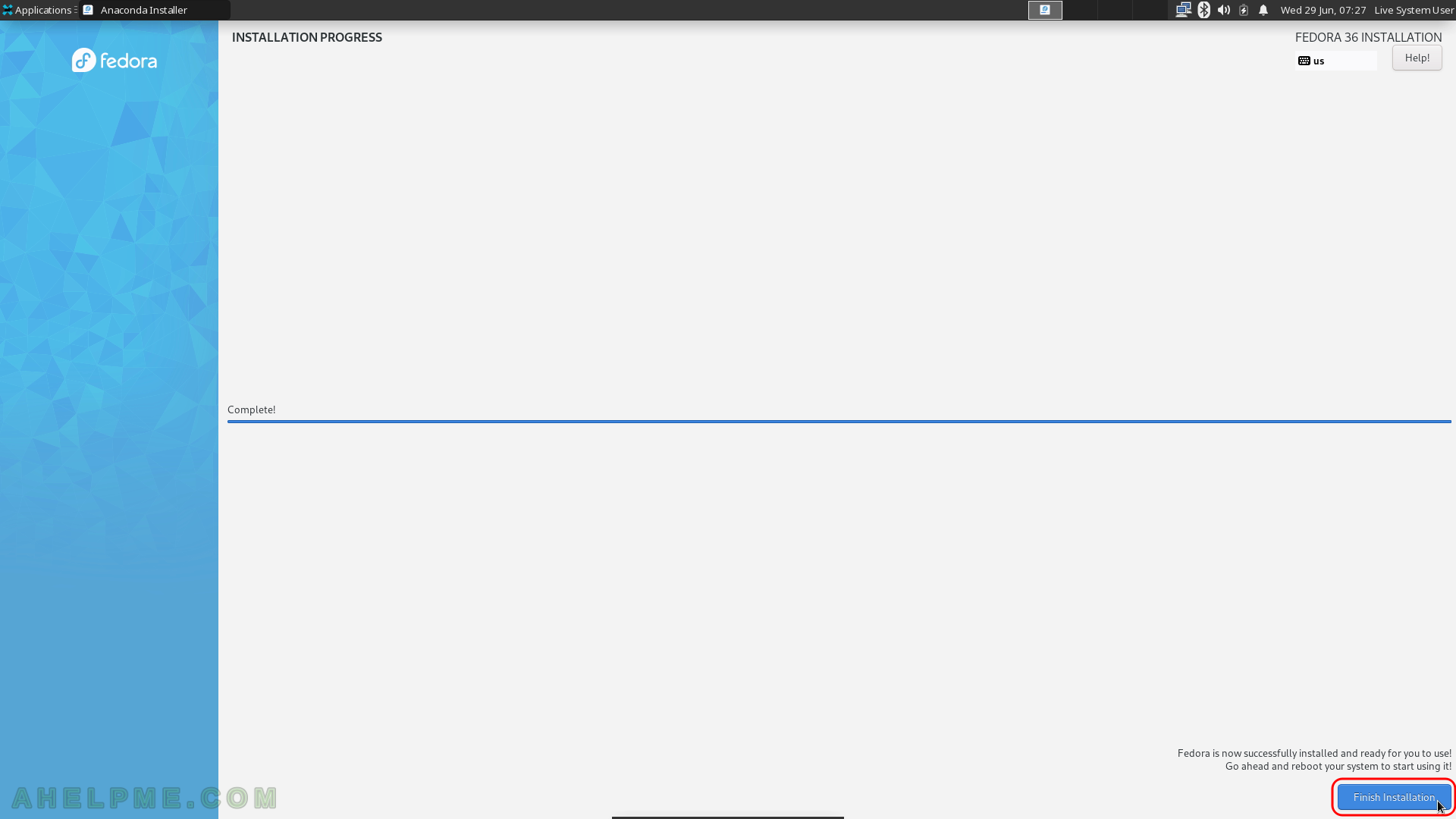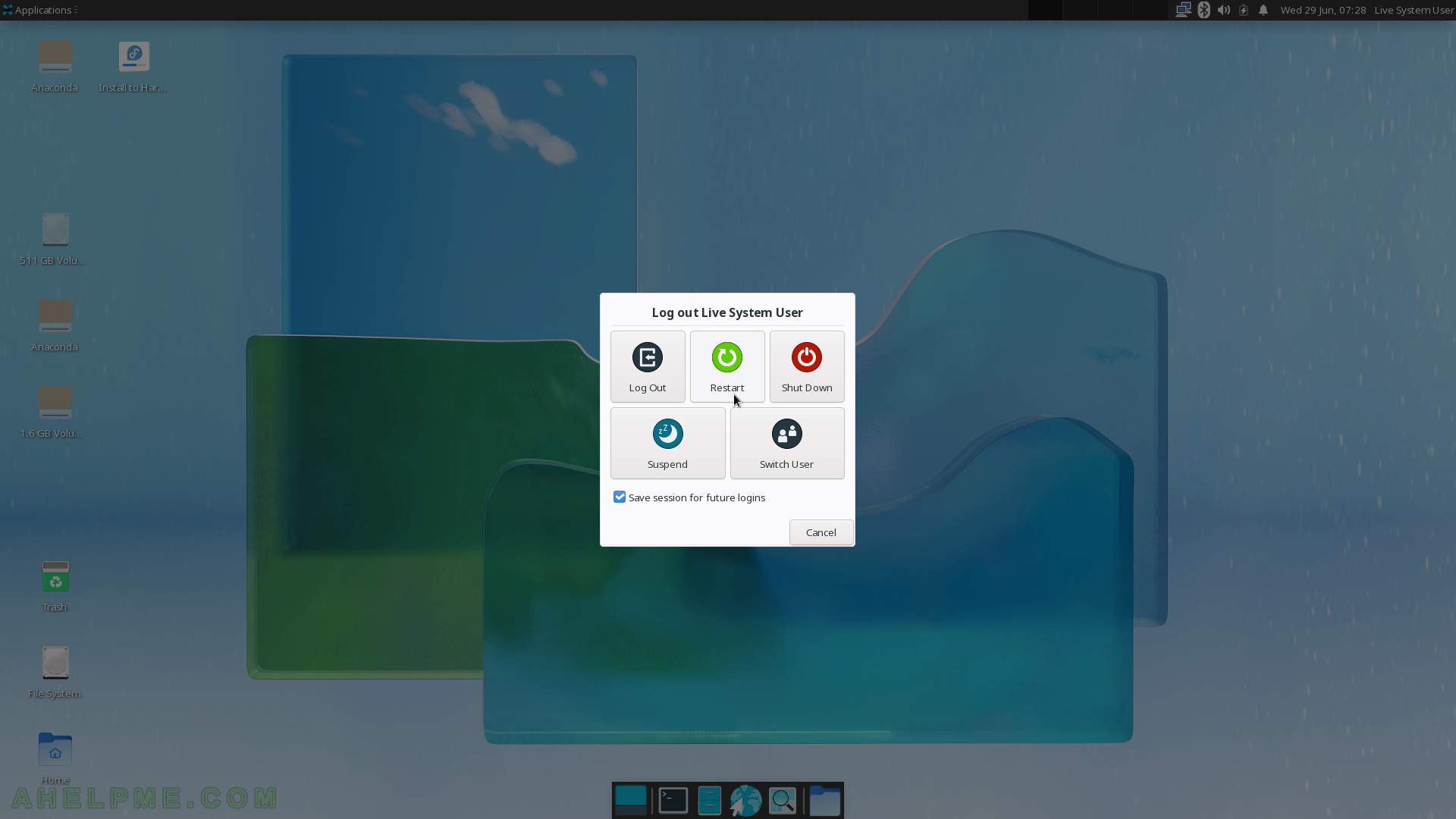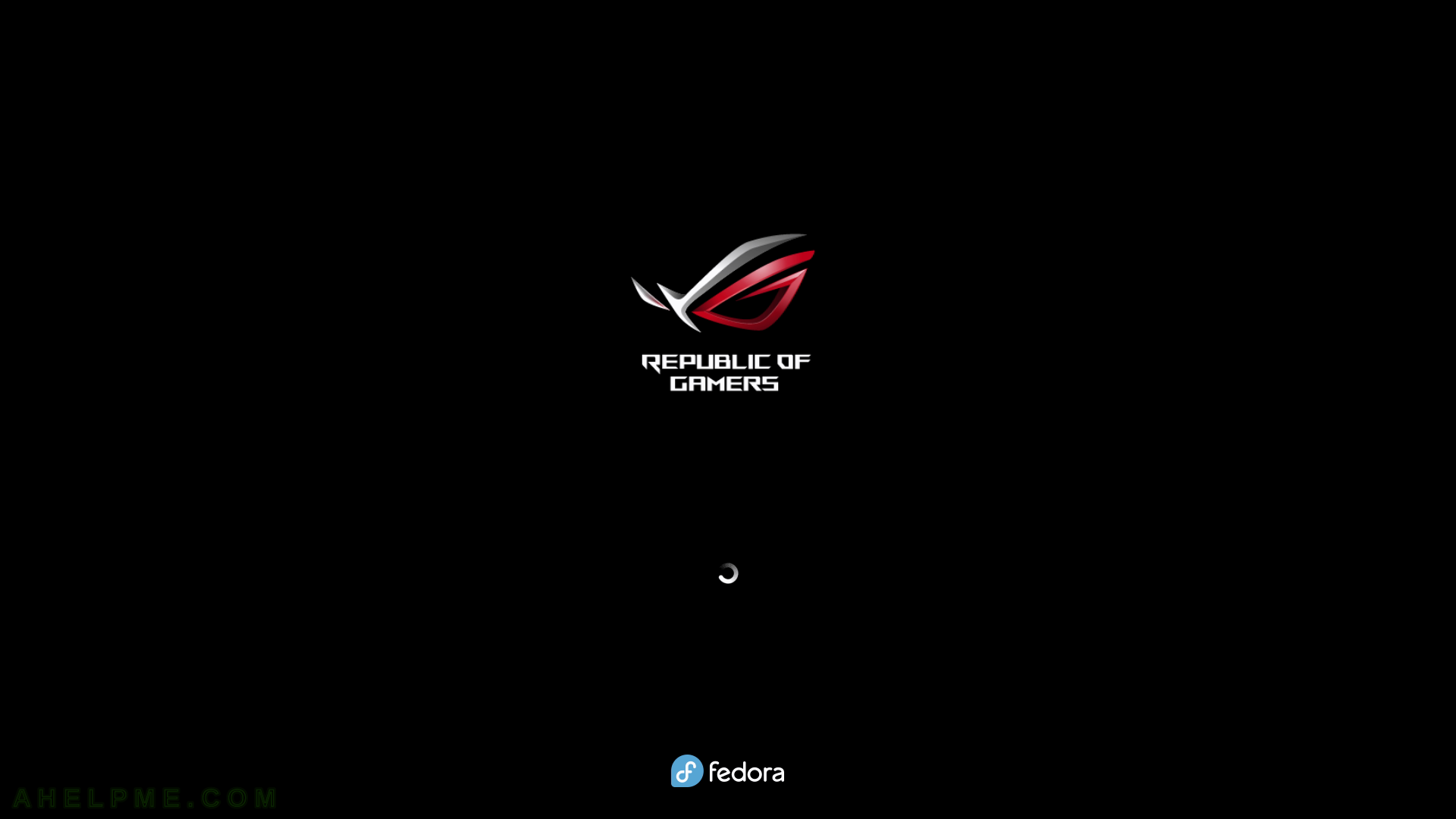SCREENSHOT 21) The installation has finished.
Quit the installation program.

SCREENSHOT 22) The user is still in the Live image, so click on the top left corner on “Applications” and then click on “Log Out” as shown.

SCREENSHOT 23) Click on the “Restart” to restart the computer.

SCREENSHOT 24) Fedora is restarting.
Shut down of the services is in progress at the background.

SCREENSHOT 25) Freshly installed Fedora 36 Xfce Desktop is the default boot option in the booting program (grub2).
There are more options if more OSes preset in the computer. The setup found these additional Operating Systems and it added to the boot menu. The kernel version is shown – 5.17.5-300.

SCREENSHOT 26) Select your user and log in with the right password.

SCREENSHOT 27) This is the default look of the Xfce Desktop.
All of the panels (i.e. toolbars) could be rearranged and customized.

SCREENSHOT 28) Click on top left corner “Applications” button to show the main menu.
Expand System sub-menu and click on “About Xfce” to show Xfce and system information.

SCREENSHOT 29) System information for this computer.
OS name is Fedora Linux 36 (Xfce) and the Xfce version is 4.16.

SCREENSHOT 30) A breif introduction of what is Xfce and the main parts it includes.
The building blocks of Xfce are Windows Manager, Panel, Desktop Manager, File Manager, Volume Manager, Session Manager, Setting System, Application Finder, Settings Daemon, A Menu Library and Thumbnails Service.
